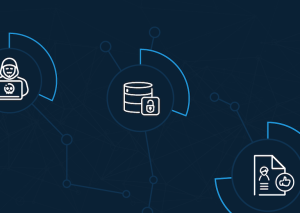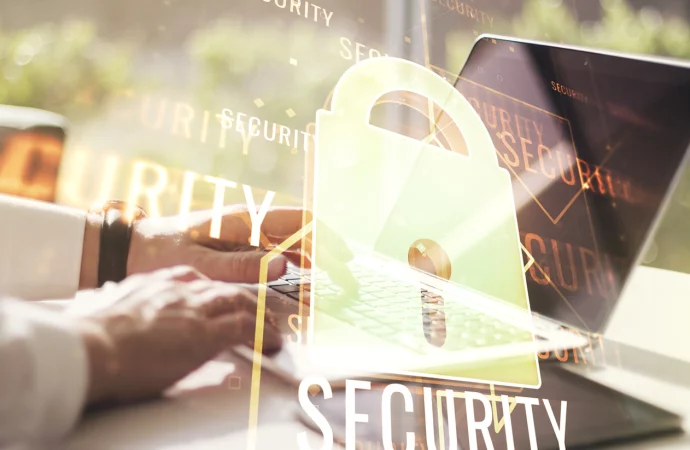Regular vulnerability assessments are a crucial component of enhancing cybersecurity measures within an organization. By conducting these assessments on a consistent basis, we are able to improve our overall cybersecurity posture and identify potential vulnerabilities that could be exploited by cyber attackers. Identifying vulnerabilities is essential in preventing cyber attacks from occurring. By proactively seeking
Regular vulnerability assessments are a crucial component of enhancing cybersecurity measures within an organization. By conducting these assessments on a consistent basis, we are able to improve our overall cybersecurity posture and identify potential vulnerabilities that could be exploited by cyber attackers.
Identifying vulnerabilities is essential in preventing cyber attacks from occurring. By proactively seeking out and addressing weaknesses in our systems, we can significantly reduce the likelihood of a successful cyber attack taking place. This proactive approach to cybersecurity is key in staying one step ahead of potential threats and ensuring the safety and security of our sensitive information.
Establishing access controls and permissions

Image by ;Yandex
Implementing strict access controls and permissions is vital in protecting our data from unauthorized access. By assigning appropriate permissions to users based on their role and responsibilities, we can ensure that sensitive information is only accessible to those who have a legitimate need to access it.
By enforcing strict access controls, we can prevent unauthorized users from gaining entry to our systems and potentially compromising our data. This added layer of security helps to safeguard our information and minimize the risk of a data breach occurring.
Backing up data regularly
Regularly backing up our data is essential in mitigating the impact of cybersecurity incidents such as ransomware attacks or data breaches. By maintaining up-to-date backups of our information, we can quickly restore our systems in the event of an attack and minimize any potential data loss.
Backing up data is crucial for ensuring business continuity and minimizing downtime in the face of a cyber attack. By regularly backing up our data, we can rest assured that our information is secure and protected from potential threats.
Implementing a secure password policy
Implementing a strong password policy for all users is a fundamental aspect of enhancing cybersecurity measures within our organization. By requiring users to create complex passwords and regularly update them, we can significantly reduce the risk of unauthorized access to our systems.
Regularly updating passwords is essential in preventing cyber attackers from gaining access to our information through compromised credentials. By enforcing strong password requirements, we can strengthen our overall security posture and protect our data from potential threats.
Securing physical access to sensitive information
Securing physical access to sensitive information is just as important as protecting our digital assets. By implementing multi-factor authentication for physical access and using security badges to restrict entry to sensitive areas, we can prevent unauthorized individuals from gaining access to our information.
By implementing these physical security measures, we can ensure that only authorized personnel are able to access our sensitive information. This added layer of protection helps to safeguard our data and prevent potential breaches from occurring.
Regularly auditing cybersecurity protocols
Regularly auditing our cybersecurity protocols is essential in ensuring the integrity of our systems and enhancing our overall protection. By conducting routine audits, we can identify any weaknesses or vulnerabilities in our security measures and take proactive steps to address them.
Enhancing cybersecurity measures through routine audits allows us to stay ahead of potential threats and ensure that our systems are secure and protected. By continuously monitoring and evaluating our security protocols, we can strengthen our defenses and minimize the risk of a cyber attack occurring.
Collaborating with cybersecurity experts for risk assessment
Collaborating with cybersecurity experts for risk assessment is a valuable strategy in enhancing our cybersecurity measures. By partnering with professionals who have expertise in identifying and mitigating security risks, we can gain valuable insights into potential vulnerabilities within our systems.
Enhancing cybersecurity measures through collaboration with experts allows us to leverage their knowledge and experience to strengthen our defenses. By working together to assess and address potential risks, we can enhance our overall security posture and better protect our organization from cyber threats
Secure Collaboration Tools
Video calls and cloud collaboration are lifelines for remote teams:
- Use Company-Approved Platforms: Avoid unauthorized or “shadow IT” apps that IT can’t monitor.
- Enable Meeting Passwords and Waiting Rooms: Require participants to enter a password or be admitted by the host.
- Lock Meetings After Start: Prevent uninvited guests from joining once the meeting is underway.
- Share Files Securely: Use encrypted file-sharing services or company intranet, not personal email or messaging apps.
- Review Permissions: Regularly audit who has access to shared drives and folders, removing former employees or external users no longer needed.
Securing your collaboration tools stops casual intruders and preserves confidentiality during remote teamwork.
Maintain Data Backup and Recovery
Even with strong defenses, breaches and hardware failures can happen:
- Follow the 3-2-1 Rule: Keep at least three copies of your data, on two different media, with one copy stored offsite.
- Use Automated Backups: Schedule daily backups to the cloud or external hard drives.
- Test Restoration Procedures: Quarterly, restore a backup to verify its integrity and your ability to recover quickly.
- Encrypt Backup Storage: Protect backup media with the same encryption standards as your primary devices.
Reliable backups ensure that you can resume work quickly after data loss or ransomware attacks.
Develop an Incident Response Plan
A clear plan minimizes damage and downtime when an attack occurs:
- Identify Critical Assets: Know which systems and data are most important.
- Define Roles and Contacts: Establish who to notify—IT, management, or law enforcement—if a breach happens.
- Set Communication Protocols: Determine secure channels for internal and external updates.
- Isolate Affected Systems: Quickly disconnect infected devices from the network to contain the threat.
- Document Lessons Learned: After recovery, review the incident to improve defenses and update policies.
Preparation and clear communication help your organization react swiftly and effectively to cybersecurity incidents.
Cultivate a Security-Aware Culture
Technology alone can’t prevent all threats. A vigilant workforce is your best defense:
- Regular Training: Offer short, interactive sessions on new threats and policies.
- Phishing Simulations: Test employees with mock phishing emails and provide immediate feedback.
- Security Reminders: Send weekly tips or post reminders in your team chat.
- Encourage Reporting: Create a no-blame environment where employees can report mistakes or suspicious activity.
When everyone takes responsibility for security, risks shrink and your remote operations stay resilient.
Conclusion
As remote work cybersecurity becomes a permanent feature of modern work life, adopting strong cybersecurity best practices is essential. Secure your home network, enforce strong passwords with MFA, keep software updated, and protect your devices with encryption and antivirus tools. Use a trusted VPN, stay alert to phishing scams, and secure collaboration platforms. Regular backups and a clear incident response plan ensure you can recover from attacks, while ongoing training builds a culture of security awareness. By following these steps, you and your organization can enjoy the flexibility of remote work without compromising data safety. Implement these best practices today to keep your home office—and your company—secure.
















